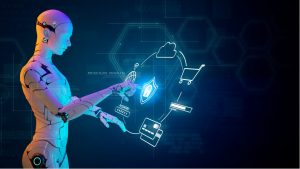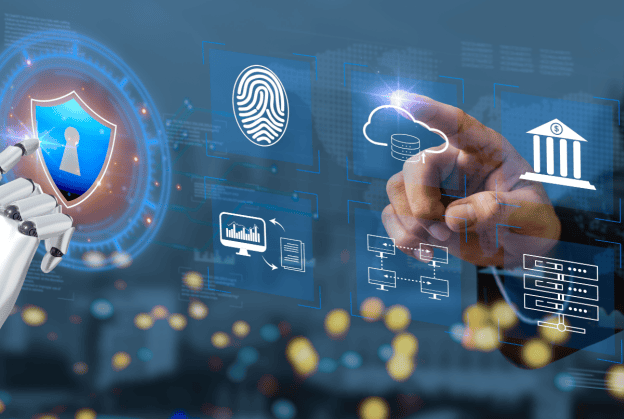As the digital landscape expands, cyber threats are growing in both sophistication and frequency. Traditional methods of safeguarding systems are no longer sufficient to keep up with increasingly complex attacks. Enter artificial intelligence (AI) – a transformative technology that is revolutionizing cybersecurity. AI’s ability to analyze vast amounts of data in real time, recognize patterns, and predict potential threats has made it a crucial tool for protecting sensitive information in today’s digital age.
This article explores how AI is being used in cybersecurity and how it helps mitigate risks associated with online threats. We will also examine the role of third-party websites, the use of website information, and the growing influence of AI in reshaping the field.
The Role of AI in Cybersecurity
AI for cybersecurity has rapidly gained traction due to its potential to detect and prevent threats more efficiently than traditional methods. According to a report by Acumen Research and Consulting, the global AI in cybersecurity market is expected to grow significantly through 2030, highlighting its increasing importance in securing online infrastructures.
Unlike conventional security systems that rely on pre-defined rules, AI systems are capable of learning and adapting based on new information. They can process the large volumes of data generated daily, flagging potential threats that might go unnoticed by human analysts. This makes AI indispensable for organizations that handle sensitive data and require constant monitoring for security breaches.
AI-Powered Threat Detection and Prevention

One of the primary advantages of AI in cybersecurity is its ability to detect threats in real-time. By analyzing patterns of behavior across networks, AI systems can identify abnormal activities, such as unauthorized access attempts or data transfers, that may indicate an impending cyberattack. This capability enables companies to act swiftly and prevent potential breaches before they cause significant harm.
Moreover, AI can help filter out false alarms, which have been a major challenge in traditional cybersecurity approaches. Instead of overwhelming security teams with alerts that may not require attention, AI can prioritize actual threats, allowing for more effective use of resources.
Machine Learning in Cybersecurity
Machine learning (ML), a subset of AI, plays a key role in enhancing cybersecurity measures. ML algorithms are capable of recognizing patterns in large datasets and learning from them over time. In the context of cybersecurity, ML models can be trained to detect anomalies in user behavior or network traffic that may signify a cyber threat.
By leveraging historical data, machine learning models can predict future attacks and continuously improve their accuracy in detecting threats. As new forms of malware, ransomware, and phishing attempts emerge, ML can quickly adapt, offering an agile defense mechanism for businesses.
AI and the Protection of Sensitive Information
In today’s digital era, the amount of sensitive information shared online is unprecedented. Companies and individuals alike must ensure that their data is protected from malicious actors. AI-powered cybersecurity systems can help safeguard sensitive information by monitoring network activity, identifying vulnerabilities, and preventing data breaches.
For example, AI can analyze login attempts on various platforms and detect patterns that suggest suspicious activity. Whether it’s unusual login locations or times, these systems can alert administrators to potential risks. AI can also provide insights into the overall security posture of an organization by assessing which areas are most vulnerable to attacks.
Third-Party Websites and AI for Cybersecurity
As businesses increasingly rely on third-party websites and services, the risk of cyber threats expands. These third-party platforms can inadvertently expose sensitive information or provide entry points for hackers. AI plays a crucial role in monitoring interactions with third-party websites and ensuring that any vulnerabilities are identified and addressed before they can be exploited.
However, it’s important to note that the use of third-party websites comes with inherent risks. For instance, companies may not have full control over how these sites manage their security protocols. AI-based tools can assist by conducting risk assessments of third-party websites, flagging any concerns, and suggesting appropriate security measures.
AI-Driven Cybersecurity for Websites

Websites, whether for personal, commercial, or institutional use, are prime targets for cyberattacks. Hackers often exploit weak points in websites to gain unauthorized access to information, inject malicious code, or launch phishing campaigns. AI-driven cybersecurity solutions are now being implemented to protect websites from these attacks by constantly monitoring for vulnerabilities and adapting to emerging threats.
AI tools can analyze website traffic, detect suspicious behaviors, and block malicious activity in real time. This proactive approach to cybersecurity ensures that website owners can prevent attacks before they occur, rather than reacting after the damage has been done.
Additionally, AI helps in ensuring that the information provided on a website remains secure. By monitoring how data is transmitted and accessed, AI systems can quickly identify potential breaches and take corrective action.
The Importance of Transparency in AI-Driven Cybersecurity
While AI is a powerful tool in defending against cyber threats, it is essential for companies to be transparent about how they use AI-driven systems. Disclosures regarding the role of AI in securing a website and managing sensitive information help build trust with users and stakeholders. Companies should inform users about the specific actions taken by AI to ensure their data is protected, especially when engaging with third-party websites.
Transparency is also key when dealing with the information obtained from third-party websites. Users need to understand the potential risks associated with these websites, as they may not be subject to the same security measures as the primary website they are interacting with.
Challenges and Limitations of AI in Cybersecurity
Despite its many benefits, AI for cybersecurity is not without challenges. One significant limitation is the potential for hackers to exploit AI systems themselves. Cybercriminals are increasingly using AI to automate their attacks, making them more difficult to detect and counteract. Additionally, AI systems can be vulnerable to adversarial attacks, where hackers manipulate the data fed into AI models, leading them to make incorrect decisions.
Another challenge is the reliance on large datasets for AI to function effectively. If the data used to train AI models is incomplete or biased, the system’s ability to detect threats may be compromised. Ensuring high-quality data and continuous updates is critical to maintaining the effectiveness of AI-based cybersecurity solutions.
Conclusion: The Future of AI in Cybersecurity
The integration of AI in cybersecurity represents a new era in digital protection. As cyber threats continue to evolve, AI provides an innovative solution that can anticipate, detect, and prevent potential attacks more effectively than ever before. From protecting sensitive information to monitoring third-party websites, AI is reshaping the way we approach cybersecurity.




